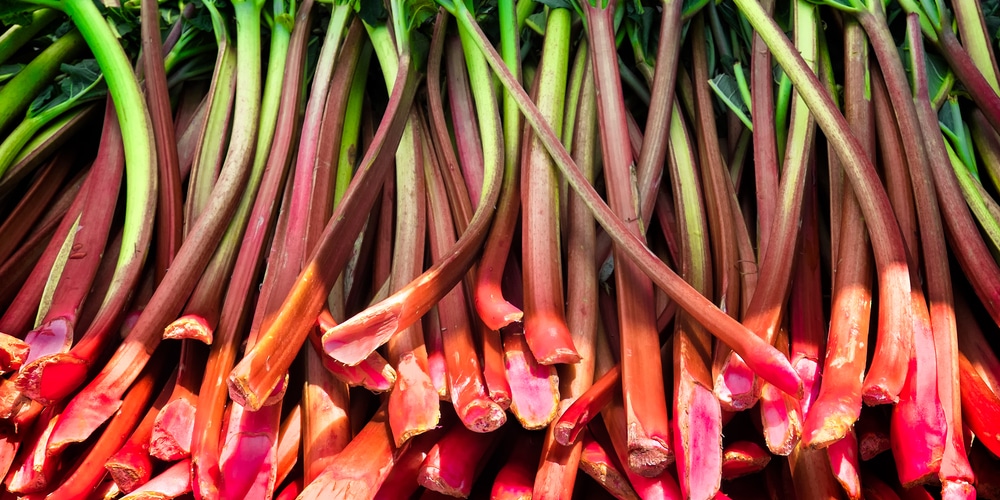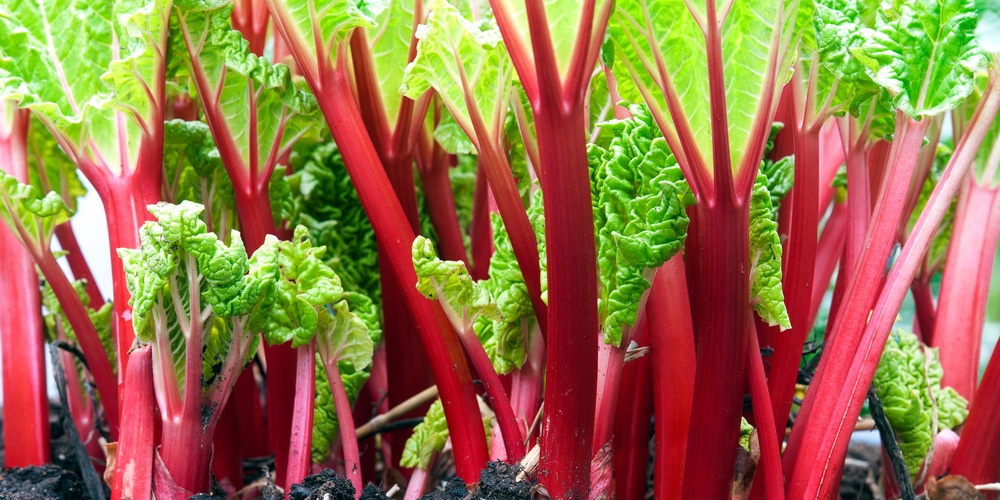With its thick, fleshy stalk and sour leaves, rhubarb is a plant that tends to provoke strong reactions. Some love its tart flavor; others find it unpalatably sour. Regardless of your opinion of its taste, its appearance is certainly striking, with large leaves and a long, thick stem.
Have you noticed that rhubarb has been appearing in stores less frequently lately? Unfortunately, because of the extreme heat, experts are predicting that the upcoming rhubarb seasons will be significantly shorter than usual.
The question is, when does this vegetable’s season start and end? Here’s what you need to know.
Rhubarb Season: Springtime Crops
In general, rhubarb is known to be a springtime crop. Similar to asparagus, the plant’s stalks grow quickly once the weather begins to warm up. They’ve been a favorite among gardeners because of their easy growth and ability to come back year after year.
Although you can find rhubarb year-round in some stores, the plant is technically a springtime crop. It grows best in cold climates and typically emerges from the ground in early April. Hardy in USDA zones 3 – 8, this perennial vegetable can live for up to fifteen years with the right care.
If you’re in a warmer climate, however, you may not see rhubarb until May or even June. In these areas, the plant is often grown in hothouses to ensure a longer season. Additionally, some cultivars have been bred to tolerate warmer temperatures and extend the season even further.
Even with these advances, once summer hits, the plant’s stalks will begin to lose their color and become mushy. For this reason, most growers consider June to be the end of the rhubarb season.
If you’re somewhere in USDA zones nine or ten, you might be able to find the plant into July, but it will likely be past its prime. Otherwise, for those belonging to USDA zones 3, the season may be as short as six weeks.
Ideal Rhubarb Growing Conditions
So, what does it take to grow this finicky plant? Despite its short season, rhubarb is prized for its ease of growth. In fact, once you have the plant established, it requires very little maintenance.
Its growing years are typically between two and four years, after which the plant will need to be divided to ensure continued growth. The best time to do this is early spring, just as the stalks begin to emerge from the ground.
Sunlight Requirements
To start, rhubarb prefers full sun but can tolerate partial shade. Considering its short season, it’s best to plant rhubarb in an area that gets at least six hours of sunlight a day. If you live in a hot climate, some afternoon shade will protect the stalks from scorching temperatures.
Soil Conditions
When it comes to soil, rhubarb is not picky. It will grow in a variety of soil types as long as the pH is between five and seven. The plant prefers rich, well-drained soil but will tolerate poorer quality soils as long. That being said, if you want to ensure large, healthy stalks, it’s best to amend your soil before planting.
Watering Needs
Rhubarb needs plenty of water. Its lush leaves and thick stalks are evidence of this, as they require a lot of moisture to stay healthy. The plant prefers consistent watering and does not tolerate drought well. To ensure your rhubarb is getting enough water, give it about one inch per week. More in hot weather and less in cooler weather or if you have very sandy soil.
For instance, in USDA zone 3, the plant may only need watering every two weeks.
How to Extend Rhubarb Season
Although it blooms profusely and has beautiful leaves, most people grow rhubarb for its tart stalks. These are used in pies, jams, and other desserts. If you want to extend the season and enjoy this vegetable all year long, there are a few things you can do.
First, you can plant multiple cultivars that mature at different times. This way, you can have a continuous supply of stalks from early spring to late summer. Second, you can grow rhubarb in containers and move them indoors when the weather gets too hot.
The amount of fertilizer you apply will also affect the plant’s season. Too much nitrogen will cause the leaves to grow large but delay stalk production. On the other hand, insufficient nitrogen will result in small, stunted stalks. The best time to fertilize is in early spring before the plant begins to grow.
A balanced fertilizer, applied at a rate of one pound per 100 square feet, is usually sufficient.
When is rhubarb season: Final Thoughts
Rhubarb seasons vary depending on where you live and the cultivar you grow. In general, the plant produces stalks from early spring to late summer. While it’s easy to find them in most grocery stores year-round, they are typically imported and not as fresh.
If you want to enjoy rhubarb at its peak, it’s best to grow your own. By planting multiple cultivars and extending the season with some simple tricks, you can enjoy fresh, seasonal rhubarb year after year.
Related Article: What to Feed Rhubarb?


